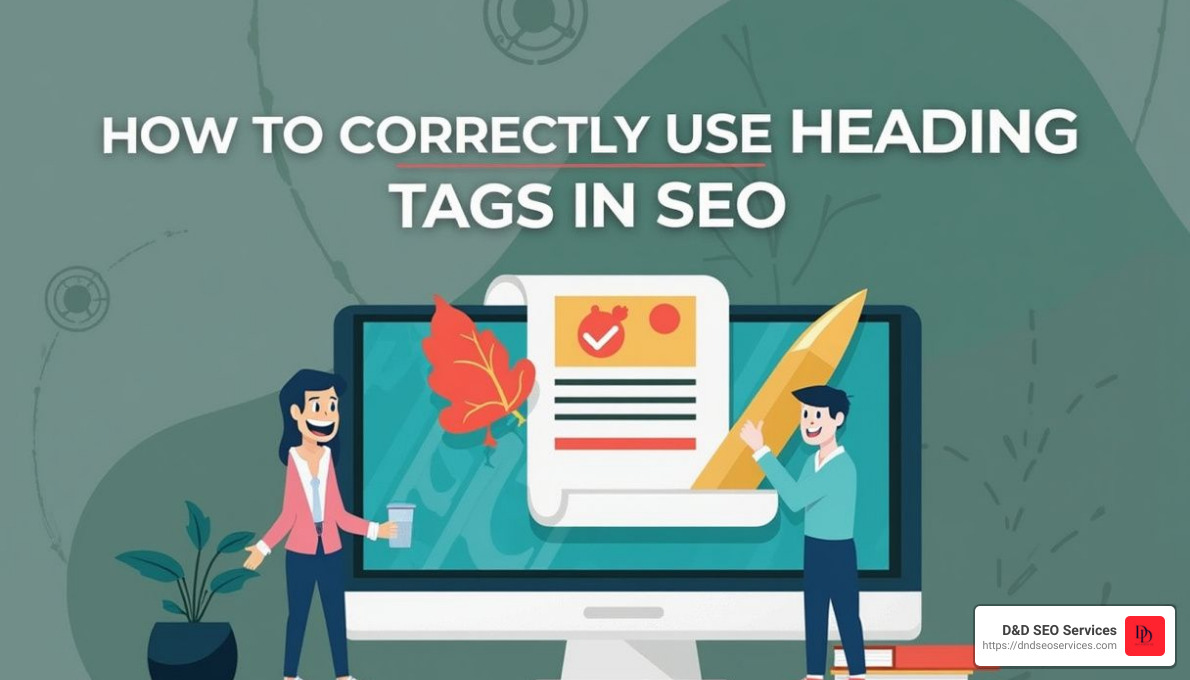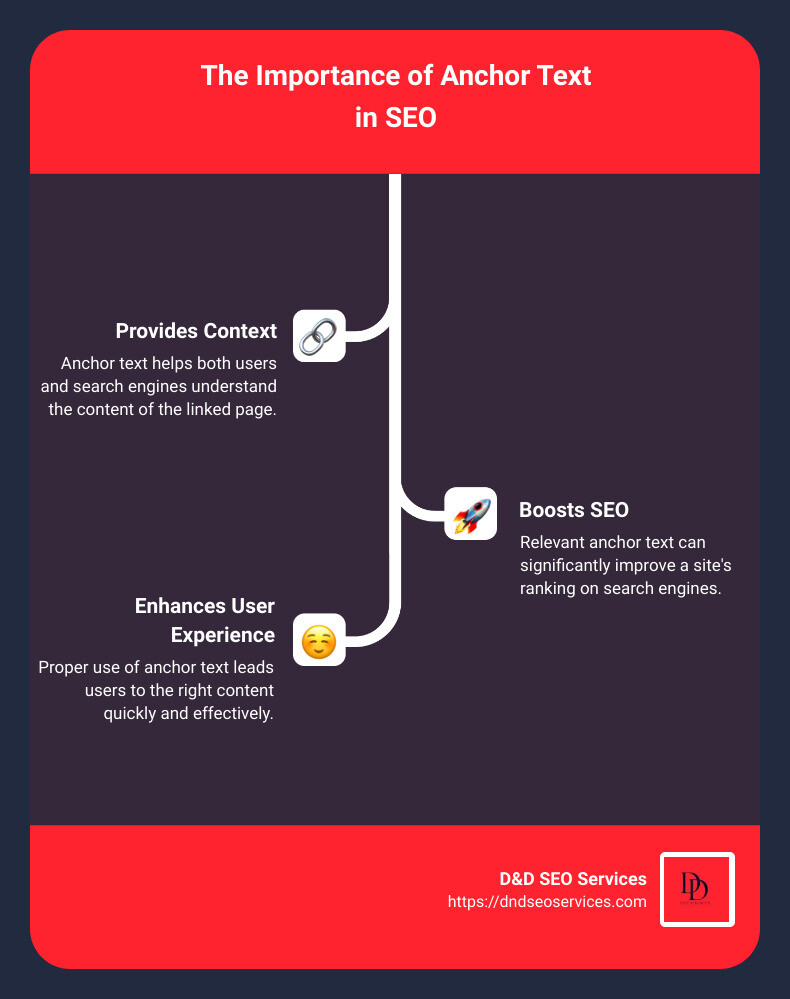What Are People Really Searching For? Insights Into User Behavior & SEO is a critical question for any business looking to improve its online presence. Understanding this helps you create content that aligns with searcher needs, improves user experience, and boosts SEO performance. Here are key points you need to know right away:
- User behavior influences search engine rankings.
- High-quality, user-focused content is essential.
- Optimizing for search intent improves user satisfaction.
User behavior includes every action a visitor takes before and during their time on your site. Analyzing these actions provides valuable insights. Why did they click on your link? How long did they stay? Did they find what they were looking for? Addressing these questions helps fine-tune your SEO strategy and improve search engine rankings.
Google considers various user engagements, such as click-through rate (CTR), bounce rate, and session duration, to rank your content. By focusing on what people are searching for and tailoring your content strategy to those needs, you can drive more traffic and satisfy your users.
My name is Danielle Birriel, founder and CEO of D&D SEO Services. For the past ten years, I’ve been passionate about helping local businesses understand user behavior to flourish online. My expertise lies in providing actionable SEO insights to improve digital strategies.
Let’s dive deeper into how to understand user search behavior and leverage it for better SEO performance.
Easy What Are People Really Searching For? Insights Into User Behavior & SEO word list:
- The Psychology of Clicks: How User Behavior Shapes SEO Strategies
- Understanding and Leveraging Latent Semantic Indexing (LSI) Keywords
- The Power of Long-Tail Keywords in SEO Content Creation
What Are People Really Searching For? Insights Into User Behavior & SEO
The Importance of User Intent
User intent, also known as search intent or query intent, is the reason behind every search query. It’s about understanding why someone is searching and what they expect to find. This goes beyond just keywords and focuses on the user’s needs and expectations.
Why does user intent matter? Because when your content aligns with what users are looking for, it boosts your site’s relevance, attracts the right audience, and improves your search engine rankings. Google has made significant updates, like the BERT algorithm, to better understand the nuances of search queries and prioritize content that meets user intent.
Types of User Intent
Understanding the different types of user intent is crucial for creating content that meets the needs of your audience. Here are the main types:
Informational Intent
Informational searches are driven by a user’s desire to learn something. These queries often start with “how to,” “what is,” or “benefits of.” For example:
- “How does photosynthesis work?”
- “Benefits of intermittent fasting”
Users are looking for clear, detailed information. If your content provides comprehensive answers, you’re more likely to rank higher in search results.
Navigational Intent
Navigational searches occur when users want to go to a specific website or page. They know where they want to go but use Google to get there faster. Examples include:
- “Facebook login”
- “Amazon homepage”
For these queries, strong branding and an intuitive site structure are key. Make sure your site is easy to steer and your brand is easily recognizable.
Transactional Intent
Transactional searches indicate a readiness to make a purchase or take a specific action. These are high-value queries for businesses because they often lead to conversions. Examples include:
- “Buy Nike shoes”
- “Best price on wireless headphones”
For these queries, a streamlined user experience is crucial. Your site should make it easy for users to complete their desired action with minimal friction.
How Google Uses User Intent
Google uses various signals to understand and rank content based on user intent. These include:
- Click-through rate (CTR): How often users click on your link in the search results.
- Time on page: How long users stay on your page.
- Bounce rate: How often users leave your site after viewing only one page.
By focusing on what people are really searching for and aligning your content with user intent, you can improve your SEO performance and satisfy your users.
Next, we’ll explore key user behavior metrics impacting SEO. Understanding these metrics can provide deeper insights into user intent and help you optimize your content even further.
Key User Behavior Metrics Impacting SEO
Understanding user behavior metrics is essential for improving SEO performance. These metrics offer insights into how users interact with your website, helping you optimize for better engagement and higher rankings. Let’s explore three crucial metrics: Click-Through Rate (CTR), Time on Page, and Bounce Rate.
Click-Through Rate (CTR)
CTR measures the percentage of users who click on your link after seeing it in the search results. It’s calculated as:
[ \text{CTR} = \frac{\text{Clicks}}{\text{Impressions}} ]Why is CTR important? A higher CTR indicates that your content is relevant to the user’s query. Google uses CTR as a signal to determine the relevance and quality of your content.
How to Find CTR:
- Google Search Console: Log in and steer to the “Performance” report. Here, you’ll see the average CTR for your site and individual pages.
- Analyze Click Data: Look at which pages have high or low CTRs and identify patterns.
Improving CTR:
- Optimize Meta Titles and Descriptions: Ensure they match user search intent and are compelling.
- Use Rich Snippets: Implement structured data to improve your search listings with additional information like ratings or FAQs.
- A/B Testing: Experiment with different titles and descriptions to see what works best.
Time on Page
Time on Page refers to the average time users spend on a specific page. This metric helps gauge how engaging and relevant your content is.
Why is Time on Page important? Longer time on page suggests that users find your content valuable and engaging, which positively impacts SEO.
How to Find Time on Page:
- Google Analytics: Go to “Behavior” > “Site Content” > “All Pages.” Check the “Avg. Time on Page” column.
- Segment by Source: Look at organic traffic specifically to understand how search visitors engage with your content.
Improving Time on Page:
- Improve Content Quality: Ensure your content is informative, well-structured, and easy to read.
- Add Multimedia: Use images, videos, and interactive elements to keep users engaged.
- Internal Linking: Guide users to related content on your site to keep them exploring.
Bounce Rate
Bounce Rate measures the percentage of users who leave your site after viewing only one page. It’s a critical metric for understanding user engagement and content relevance.
Why is Bounce Rate important? A high bounce rate can indicate that your content isn’t meeting user expectations or that your site has usability issues.
How to Find Bounce Rate:
- Google Analytics: Steer to “Audience” > “Overview” to see the overall bounce rate. For page-specific data, go to “Behavior” > “Site Content” > “All Pages.”
- Compare with Competitors: Tools like Semrush can help you see how your bounce rate stacks up against competitors.
Improving Bounce Rate:
- Match Content to User Intent: Ensure your content aligns with what users are searching for.
- Improve Page Load Speed: Slow-loading pages can drive users away. Use tools like Google PageSpeed Insights to identify and fix issues.
- Optimize Mobile Experience: Ensure your site is mobile-friendly, as many users access content on their phones.
By focusing on these key user behavior metrics, you can gain valuable insights into how users interact with your site and make data-driven decisions to improve your SEO performance.
Next, we’ll explore how user behavior affects SEO rankings. Understanding Google’s use of behavioral signals can help you tailor your strategies for better results.
How User Behavior Affects SEO Rankings
Understanding how user behavior impacts SEO rankings is crucial for any website owner. Google uses various behavioral signals to determine the relevance and quality of your content. Let’s explore how these signals affect your ranking.
Google’s Use of Behavioral Signals
Google’s algorithms consider many factors to rank pages. Some of the key metrics include:
- Click-Through Rate (CTR): Measures how often users click on your link in search results. A higher CTR indicates relevance.
- Bounce Rate: Shows the percentage of users who leave after viewing only one page. A high bounce rate can signal that the content isn’t meeting user needs.
- Time on Page: Indicates how long users stay on a page. Longer times suggest engaging content.
- Engagement Metrics: Includes likes, shares, and comments. High engagement shows that users find your content valuable.
Click Data
Google analyzes click data to understand user preferences. For example, if users frequently click on a particular link and spend time on the page, Google sees this as a positive signal. Conversely, if users quickly bounce back to the search results, it indicates the content may not be relevant.
Algorithm Updates
Google frequently updates its algorithms to improve search results. These updates often focus on better understanding user behavior. For instance, the RankBrain algorithm uses machine learning to interpret search queries and match them with relevant content.
Enhancing User Experience (UX)
User experience (UX) plays a significant role in how users interact with your site. A positive UX can lead to better engagement metrics, which in turn can improve your SEO rankings.
User-Friendly Interface
A user-friendly interface is crucial for keeping visitors engaged. Here are some tips:
- Simple Navigation: Make it easy for users to find what they need. Clear menus and internal links help guide users through your site.
- Readable Content: Use short paragraphs, bullet points, and headings to make your content easy to read.
Mobile Optimization
With more people using mobile devices to browse the web, mobile optimization is essential. Google uses mobile-first indexing, meaning it primarily uses the mobile version of a site for ranking and indexing.
- Responsive Design: Ensure your site looks good on all devices.
- Fast Load Times: Mobile users are less patient. Tools like Google PageSpeed Insights can help you optimize load times.
Interactive Elements
Adding interactive elements can make your content more engaging:
- Videos and Images: These can break up text and keep users engaged longer.
- Quizzes and Polls: Interactive content can increase user interaction and time on page.
By focusing on these aspects, you can create a better user experience, which will positively impact your SEO rankings.
Next, we’ll explore practical strategies for optimizing content based on user behavior. Understanding keyword research and content optimization techniques can help you tailor your content to meet user needs.
Practical Strategies for Optimizing Content Based on User Behavior
To optimize your content effectively, you need to understand what users are searching for and how to meet their needs. This involves keyword research, content optimization, and leveraging SERP features and structured data. Let’s explore these strategies.
Keyword Research Strategies
Intent-Driven Keywords
Understanding user intent is crucial for effective keyword research. Users generally have three types of intent: informational, navigational, and transactional. By identifying the intent behind search queries, you can select keywords that align with what users are looking for.
- Informational Intent: Users want to learn something. Keywords like “how to,” “what is,” and “best ways to” are common.
- Navigational Intent: Users are looking for a specific website. Keywords often include brand names or specific product names.
- Transactional Intent: Users aim to make a purchase. Keywords like “buy,” “discount,” and “price” are typical.
Google Trends
Google Trends is a powerful tool for understanding what people are searching for. It shows the popularity of search terms over time and can help you identify trending topics. This can be especially useful for creating timely and relevant content.
Answer the Public
Answer the Public generates a list of questions and phrases that people are searching for around a specific keyword. This can give you insights into the specific questions your audience has, allowing you to create content that directly addresses their needs.
Forums
Forums like Reddit and Quora are gold mines for understanding user intent. By browsing threads related to your industry, you can see the questions and concerns people have. This can inform your keyword strategy and content creation.
Content Optimization Techniques
Comprehensive Content
Creating comprehensive content that covers a topic in-depth can help you rank higher in search results and meet user needs more effectively. Comprehensive content often includes:
- Detailed Explanations: Cover every aspect of the topic.
- Visuals: Use images, infographics, and videos to make the content more engaging.
- Examples and Case Studies: Real-world examples can make your content more relatable.
Addressing Multiple Intents
A single piece of content can address multiple user intents. For example, a blog post titled “10 Best Laptops for Graphic Designers” can cater to both informational and transactional intents. It provides detailed information about each laptop’s features and includes links to where they can be purchased.
Local SEO
Optimizing for local searches is essential if your business serves a specific geographic area. Ensure your Google My Business profile is complete and consistent across all online directories. Use local keywords and create location-specific content to improve your visibility in local searches.
Structured Data Markup
Structured data markup helps search engines understand your content better, making it more likely to appear in SERP features like featured snippets. Use schemas like FAQ, How-To, or Recipe to provide structured information about your content.
By employing these keyword research and content optimization techniques, you can create content that not only ranks well but also meets the needs of your audience.
Next, we’ll address some frequently asked questions about user behavior and SEO. Understanding these common queries can help you further refine your strategy.
Frequently Asked Questions about User Behavior & SEO
How does user behavior affect SEO?
User behavior plays a crucial role in SEO because search engines like Google use it to gauge the relevance and quality of your content. Click-through rates (CTR), time spent on page, and bounce rates are key metrics that search engines monitor.
- Click-Through Rates (CTR): This metric shows how often users click on your site after seeing it in search results. A higher CTR indicates that your meta titles and descriptions are appealing and relevant to users’ queries. If your CTR is low, it may signal to Google that your content is not what users are looking for, which can negatively impact your rankings.
- Time Spent on Page: This measures how long users stay on your page. A longer time spent on page suggests that your content is engaging and valuable, aligning well with user intent. Conversely, if users leave quickly, it might indicate that your content doesn’t meet their needs or expectations.
- Bounce Rates: This metric shows the percentage of visitors who leave your site after viewing just one page. A high bounce rate can signal to search engines that your content isn’t relevant or engaging, which can hurt your rankings. However, it’s important to consider the context—some pages, like blog posts, naturally have higher bounce rates.
What are the main user behavior metrics?
The main user behavior metrics that impact SEO are:
- Click-Through Rate (CTR): The percentage of users who click on your link in search results. It reflects how well your meta titles and descriptions match user queries.
- Time on Page: The average time a user spends on a page. It indicates how engaging and relevant your content is to the user.
- Bounce Rate: The percentage of visitors who leave your site after viewing only one page. A high bounce rate can indicate that your content doesn’t meet user expectations.
Why is user intent important for SEO?
User intent is the underlying reason behind a user’s search query. Understanding and aligning your content with user intent is crucial for several reasons:
- User Needs: When your content matches what users are searching for, it satisfies their needs better. This leads to higher engagement and lower bounce rates.
- Search Relevance: Search engines aim to provide the most relevant results. If your content aligns with user intent, it’s more likely to be deemed relevant, improving your rankings.
- Content Alignment: By understanding user intent, you can create content that directly addresses users’ questions and problems. This not only improves user satisfaction but also boosts your chances of ranking higher in search results.
For example, if users are searching for “how to fix a leaky faucet,” they have an informational intent. Your content should provide detailed steps and tips to fix the faucet, rather than just selling plumbing services.
In summary, understanding and optimizing for user behavior and intent is essential for improving your SEO performance. By focusing on key metrics like CTR, time on page, and bounce rate, and aligning your content with user intent, you can create a more engaging and effective online presence.
Conclusion
Understanding user behavior and search intent is crucial for any successful SEO strategy. At D&D SEO Services, we specialize in creating personalized SEO strategies that align with the unique needs of your business. Whether you’re a local business in Fort Myers or looking to expand your online presence, our team is here to help.
Personalized SEO Strategies
Every business is different, and so are its SEO needs. We tailor our strategies to meet your specific goals, ensuring that your content is not only optimized for search engines but also resonates with your target audience. By focusing on user behavior metrics like click-through rates (CTR), time on page, and bounce rates, we ensure that your content meets user expectations and performs well in search engine rankings.
Local SEO Expertise
Being a local business ourselves, we understand the Fort Myers market inside and out. Our local SEO strategies are designed to improve your visibility in local searches, driving more traffic and leads to your business. From optimizing your Google My Business profile to incorporating local keywords, we cover all aspects of local SEO to help your business grow.
Data-Driven Approach
We believe in the power of data. Our strategies are backed by thorough research and analytics, ensuring that every action we take is aimed at achieving measurable results. From keyword research to performance tracking, we use data to guide our decisions, helping you achieve sustainable online success.
Partner with D&D SEO Services to transform your digital presence and achieve sustainable growth.
Explore our Fort Myers Local SEO services today and see how we can help you grow.
In today’s competitive landscape, having a robust digital marketing strategy is crucial. By understanding user behavior and aligning your content with user intent, you can create a more engaging and effective online presence. Let us help you steer the complexities of SEO and achieve your business goals.










